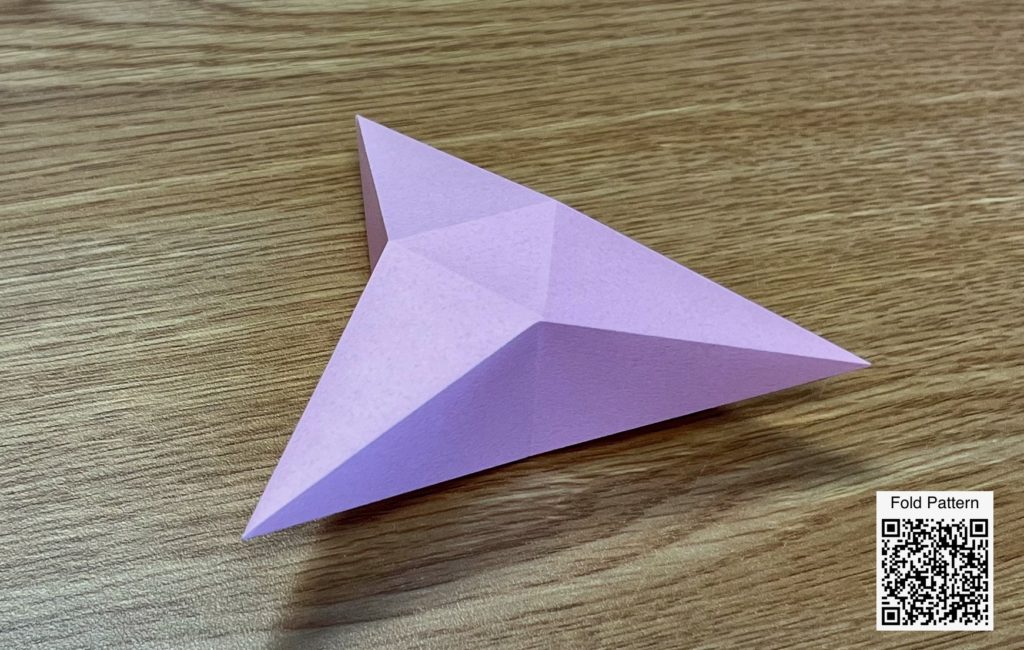
Three Points of Defect, folded paper
[14 F, 21 E, 9 V] The “angle defect” of a vertex of a polyhedron is 360 degrees minus the sum of the angles of the faces meeting at that vertex. For example, each vertex of a cube has angle defect 90 degrees, since the three right angles meeting at any vertex add to 270 degrees and 360 – 270 = 90. A vertex is called “flat” if it has angle defect zero. Only a flat vertex can be folded from paper without cutting, gluing, or overlapping.
A theorem of Descartes says that for any genus-zero polyhedron (e.g. all but one shown in the Polyplane exhibit), the sum of the angle defects of its vertices will be 720 degrees.
Depicted here is a polyhedron with only three non-flat vertices–the three points of the star. The other six vertices are folded from paper, showing that they must be flat.
No polyhedron may have two or fewer non-flat vertices since the angle defect of each vertex is less than 360 degrees. Therefore, the polyhedron depicted here has the fewest possible non-flat vertices.
About the artist: Stepan Paul is a Teaching Assistant Professor North Carolina State University. He is interested in using interactive models (physical and digital) to illustrate concepts in calculus and geometry for learners. See http://stepanpaul.com for more information.